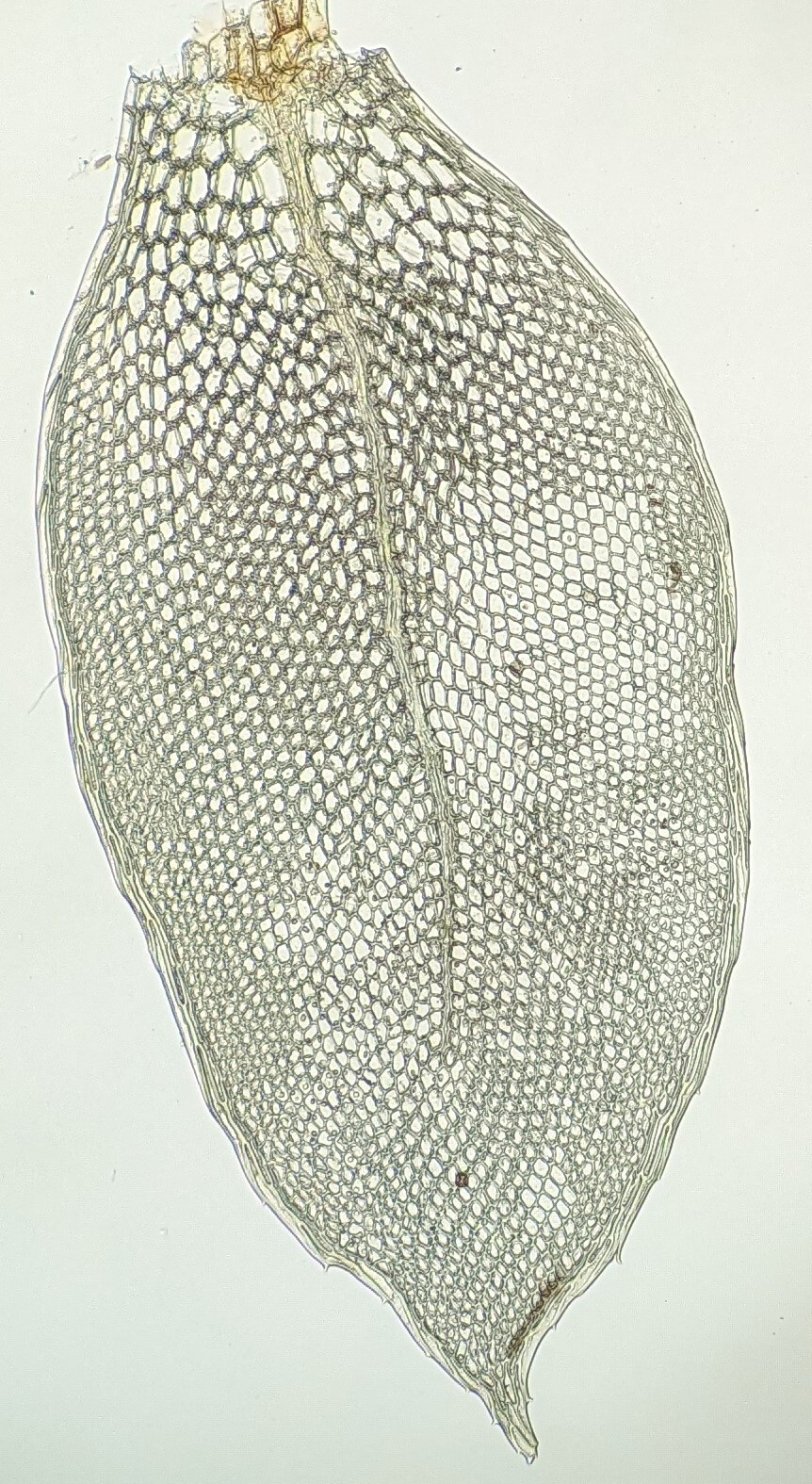Daltoniaceae
Autoicous, synoicous (not in Victoria), or dioicous. Asexual reproduction by gemmae borne in axillary clusters, on leaves, on protonema (not in Victoria), on rhizoids (not in Victoria) or on a terminal pseudopodium (not in Victoria), or by caducous leaves (not in Victoria). Turves, tufts, or mats, rarely just a persistent protonema (not in Victoria) on trees, logs, soil or rocks. Stem erect or prostrate, simple or sparingly branched, often with axillary tufts of rhizoids or with rhizoids near base or where in contact with substrate; without paraphyllia; with or without pseudoparaphyllia; central strand present or absent. Leaves usually complanate or sometimes with leaves spirally inserted around stem and branches and facing in all directions, erect- to wide-spreading or secund (not in Victoria) when moist, scarcely altered, crisped or contorted when dry, monomorphic or dimorphic and with lateral leaves largest, symmetric or asymmetric; apex apiculate, obtuse, rounded, acute or rarely acuminate, sometimes with a hairpoint (not in Victoria); costa short, extending into the apical half of leaf, or rarely percurrent (not in Victoria) or excurrent (not in Victoria), forked or simple, sometimes absent; margins entire or dentate, plane or recurved, with a border of more elongate cells or without a border; laminal cells hexagonal, elliptic or quadrate, rarely linear-rhombic, sometimes longer or larger toward base or near costa, smooth; alar cells not differentiated. Pleurocarpous. Capsule erect to pendent, symmetric, exserted, operculate. Calyptra mitrate, glabrous or hairy, usually fimbriate at base. Operculum rostrate. Peristome double; exostome of 16 teeth, not divided; endostome segments 16, with a low or rarely a high basal membrane, rarely segments absent (not in Victoria) or basal membrane absent; cilia absent, poorly developed, or rarely well-developed (not in Victoria).
Worldwide except for polar regions, with fourteen genera and around 200 species (Ho et al. 2012), most from Malesia; four genera and nine species.
Genera here included in the Daltoniaceae were recognised in a broader Hookeriaceae by Streimann (1997, 1999, 2000), following the classification of Buck & Vitt (1986). Hookeriaceae in this broad circumscription has since been shown to be non-monophyletic with respect to Epheremopsidaceae and Leucomiaceae in phylogenetic analyses of chloroplast, mitochondrial and nuclear DNA sequences (Buck et al. 2005). The circumscription of Daltoniaceae followed here is likely to be monophyletic (Buck et al. 2005) and encompasses a lineage that can be morphologically distinguished from other lineages previously included in a broad Hookeriaceae by leaves with a single costa or no costa (Buck et al. 2005).
Calyptrochaeta is somewhat anomalous in the Daltoniaceae because of the weak costa, well-developed stem anatomy and curved setae (Buck 1988) and in some phylogenies based on chloroplast, mitochondrial and nuclear DNA sequences, this genus is placed outside of Daltoniaceae (Ho et al. 2012). Buck et al. (2005) resolved Calyptrochaeta as the basal-most diverging lineage of the Daltoniaceae and until its phylogenetic position can be better confirmed it is here maintained in Daltoniaceae.
 Spinning
SpinningBuck, W.R. (1988). Another view of familial delimitation in the Hookeriales. Journal of the Hattori Botanical Laboratory 64: 29–36.
Buck, W.R.; Cox, C.J.; Shaw, A.J.; Goffinet, B. (2005). Ordinal relationships of pleurocarpous mosses, with special emphasis on the Hookeriales. Systematics and Biodiversity 2: 121–145.
Buck, W.R.; Vitt, D.H. (1986). Suggestions for a new familial classification of pleurocarpous mosses. Taxon 35: 21–60.
Ho, B.-C.; Pokorny, L.; Tan, B.C.; Frahm, J.-P.; Shaw, A.J.; Quandt, D. (2012). Molecular evolution and diversification of the moss family Daltoniaceae (Hookeriales, Bryophyta) with emphasis on the unravelling of the phylogeny of Distichophyllum and its allies. Botanical Journal of the Linnean Society 170: 157–175.
Streimann, H. (1997). Taxonomic studies on Australian Hookeriaceae (Musci). 1. Introduction and the genera Achrophyllum, Callicostella, Chaetomitrium and Cyclodictyon. Journal of the Hattori Botanical Laboratory 82: 281–304.
Streimann, H. (1999). Taxonomic studies on Australian Hookeriaceae (Musci). 2. The genera Distichophyllum and Bryobrothera. Journal of the Hattori Botanical Laboratory 86: 89–119.
Streimann, H. (2000). Taxonomic studies on Australian Hookeriaceae (Musci). 3. The genera Calyptrochaeta, Daltonia, Hookeriopsis and Sauloma. Journal of the Hattori Botanical Laboratory 88: 101–138.

